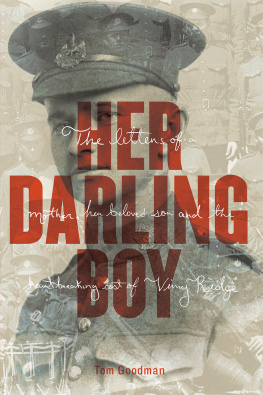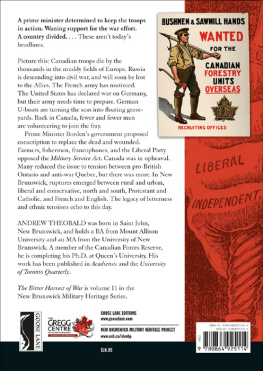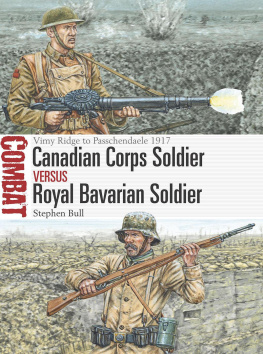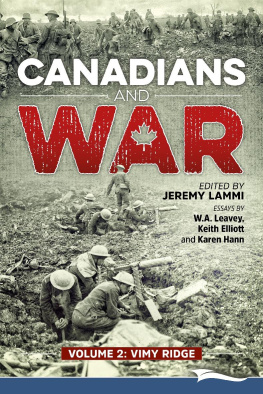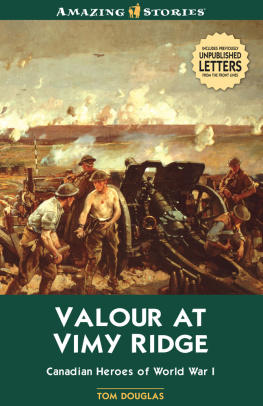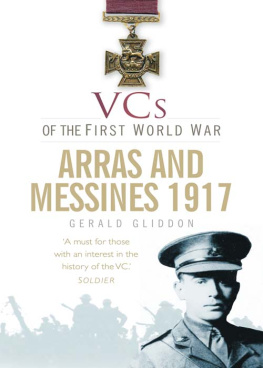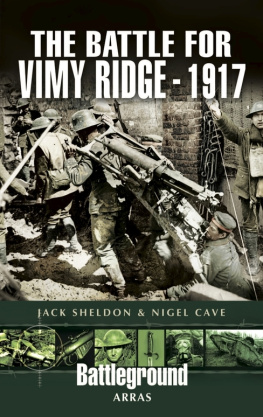Vimy Ridge
Vimy Ridge
A Canadian Reassessment
Edited By
Geoffrey Hayes
Andrew Iarocci
Mike Bechthold
This book has been published with the help of a grant from the Canadian Federation for the Humanities and Social Sciences, through the Aid to Scholarly Publications Programme, using funds provided by the Social Sciences and Humanities Research Council of Canada. We acknowledge the support of the Canada Council for the Arts for our publishing program. We acknowledge the financial support of the Government of Canada through the Book Publishing Industry Development Program for our publishing activities.
Library and Archives Canada Cataloguing in Publication
Vimy Ridge : a Canadian reassessment / edited by Geoffrey Hayes, Andrew Iarocci, Mike Bechthold.
Includes bibliographical references and index.
ISBN 978-0-88920-508-6
1. Vimy Ridge, Battle of, France, 1917. 2. Canada. Canadian Army. Canadian Corps History. 3. World War, 1914-1918Canada. I. Hayes, Geoffrey, 1961- II. Iarocci, Andrew, 1976- III. Bechthold, Michael, 1968
D545.V5V555 2007 940.431 C2007-901176-4
2007 Laurier Centre for Military Strategic and Disarmament Studies and Wilfrid Laurier University Press, Waterloo, Ontario, Canada
Cover, photo design, and maps by Mike Bechthold. Text design by Michelle Fowler.
This book is printed on Ancient Forest Friendly paper (100% post-consumer recycled).
Printed in Canada
Every reasonable effort has been made to acquire permission for copyright material used in this text, and to acknowledge all such indebtedness accurately. Any errors and omissions called to the publishers attention will be corrected in future printings.
No part of this publication may be reproduced, stored in a retrieval system or transmitted, in any form or by any means, without the prior written consent of the publisher or a licence from The Canadian Copyright Licensing Agency (Access Copyright). For an Access Copyright licence, visit www.accesscopyright.ca or call toll free to 1-800-893-5777.
Contents
Illustrations
Foreword
The battle for Vimy Ridge in April 1917 marked the first occasion during the Great War when all four divisions of the Canadian Corps launched a simultaneous attack upon one front. This is only one of many assertions that have been made about the battle. It has also been said again and again that Vimy was a great strategic victory, the most important Canadian battle of the war and an experience which awakened a sense of Canadian nationalism. These and other claims are carefully examined in this volume. The opening essay in the collection suggests that Vimy Ridge is regarded in the United Kingdom as a solely Canadian affair largely because British school children and tourists regularly visit the Canadian Vimy memorial where they receive a Canadian perspective on the battle from Canadian student guides which British school teachers are ill-equipped to put into wider context or point out the contribution that non-Canadians made to the battle. This book puts the Canadian effort into context. The activities of each of the four Canadian divisions taking part are carefully examined as is the work of the Canadian Engineers, Artillery and Medical Corps. Other chapters are devoted to the German forces who fought at Vimy, as well as the battles that followed the capture of the ridge. There is an essay on the Vimy Ridge poetry that proliferated between 1917 and 1936 which demonstrates a surprising degree of concordance in terms of theme by the poets. An essay on the significance of the Vimy memorial, and another on its fate under German occupation during the Second World War greatly enhance our understanding of Canadas Vimy story.
Without doubt the authors collectively present the most comprehensive examination of the Battle of Vimy Ridge which has so far been published. They call for more research to answer new questions that have been raised, and provide grounds for arguing that the Battle of Vimy Ridge is a Canadian epic, if not the greatest, most important or innovative Canadian action during the war.
An epic, the Oxford English Dictionary reminds us, embodies a nations conception of its own past or of the events in its history which it finds most worthy of remembrance. But an epic also has undertones which are not universally understood. Historians frequently point out that what happened does not always match what people later say happened. Moreover, those who knew what happened, from personal experience, often never spoke of it. My grandfathers missing right hand was endlessly fascinating when I was a small boy and even a young man. Equally fascinating was his refusal to tell me how he lost that hand at Vimy Ridge in April 1917. Those who knew what happened ninety years ago are all now long gone. But those of us still wishing to know something of what they experienced will be grateful to the authors of this volume. Surely, with the appearance of this book, it will be impossible in the twenty-first century for any reader (even a Canadian Minister of National Defence) to confuse the Battle of Vimy Ridge with the Vichy government in France during the Second World War.
A.M.J. Hyatt
August 2006
Acknowledgements
The editors would like to thank the following people, without whom this project would not have been possible.
Terry Copp is the Director of the Laurier Centre for Military Strategic and Disarmament Studies at Wilfrid Laurier University. Terrys endless curiosity, energy and enthusiasm have inspired countless students of Canadian history. All three editors are lucky to be among them. A very special thanks to Michelle Fowler, who manages the Laurier Centres daily operations, and whose hard work on this project appears here in countless ways. We also want to thank Brandey Barton, also from the Laurier Centre, whose quiet efficiency has been so much appreciated, and Paul Kelly, who assisted with the book design.
We were especially pleased to have Professor A.M.J. Hyatt agree to write the forward to this work. Again and again the editors found that his writing on Arthur Currie set for us a very high standard of scholarship. In the not too distant past, two of the editors were fortunate to be students of Professor Hyatt, and we only hope that our contribution to understanding Canadas involvement in the First World War may be as enduring as his.
Of course the editors extend many thanks to the authors for their excellent chapters, hard work and patience throughout the project.
From WLU Press, Brian Henderson, Jacqueline Larson and Heather Blain-Yanke showed great enthusiasm for this book. And great patience. We also extend our gratitude to our anonymous readers who commented on the manuscript for the Canadian Federation for the Humanities and Social Sciences.
Photographs were provided by the Canadian Forces Joint Image Centre, the Canadian War Museum, Legion Magazine, the Library and Archives of Canada and Marie-Jose Lafond, a former Vimy guide, and currently the Program Director at the Juno Beach Centre in Normandy.
Mr. Blake Seward and his students at Smiths Falls District Collegiate Institute completed a great deal of research on men who fought and died at Vimy Ridge. Some of their work is found in the appendix. We wish to thank: Rebecca McIlravy, Lauren Quattrocchi, Mac Rutherford, Ally Lowe, Emily Maitland, Kaitlyn McNamara, Charlie Berrigan, Maria Fournier, Rob Reid, Josh Foy, Amy Lett, Robert Porter, Alie McMeekin, Jon Lee and Kayla McMullen for their hard work helping us learn more about the men who fought the Battle of Vimy Ridge.
Next page


